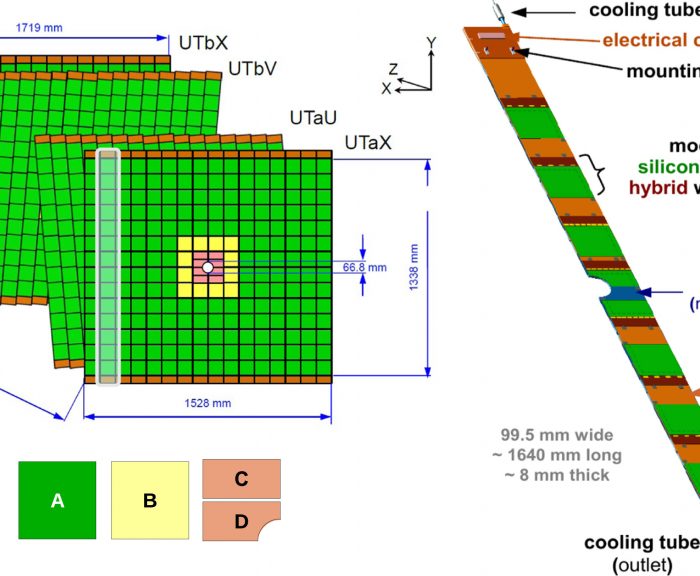The Upstream Tracker is one of the new detectors being constructed for the LHCb Upgrade. The effort is centered at Syracuse with collaborators at Cincinnati, CERN, Krakow, Maryland, Milano, MIT, and Zurich. Details of the UT design are documented in the Technical Design Report. Briefly, the UT design is based on 10 cm x 10 cm x 0.25 mm silicon sensors mounted on a lightweight carbon fiber support structure, called a stave.
The staves are used to form 4 large planes of silicon, as shown in the figure below. Because the LHCb dipole magnet bends charged particles in the horizontal (x) plane, the first and last plane (UTaX and UTbx) have the silicon sensor strips oriented vertically, to provide precise measurements in that direction. The UTaU and UTbV planes have the sensor strips tilted at +5o and – 5o with respect to the vertical, so that while they also provide precise measurement information in the x-direction, they also carry information on the y-coordinate of the charged particle as well.
Signals from each beam bunch crossing in LHCb are read out with fast electronics and sent to the LHCb data acquisition system where the software trigger makes a decision on whether or not to keep the information. Those events that are accepted by the trigger are saved on permanent storage. An overview of the UT detector is shown below.
Check out some videos of UT:
Learn more about various components by clicking on the links to the right.

